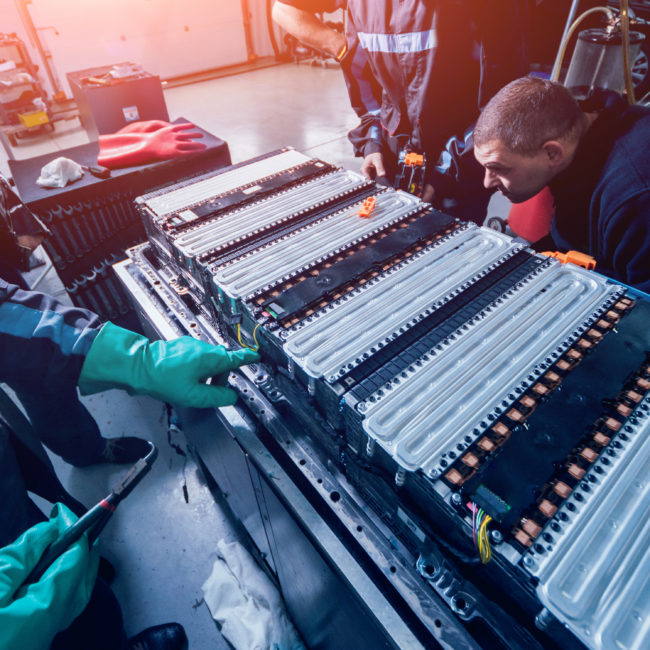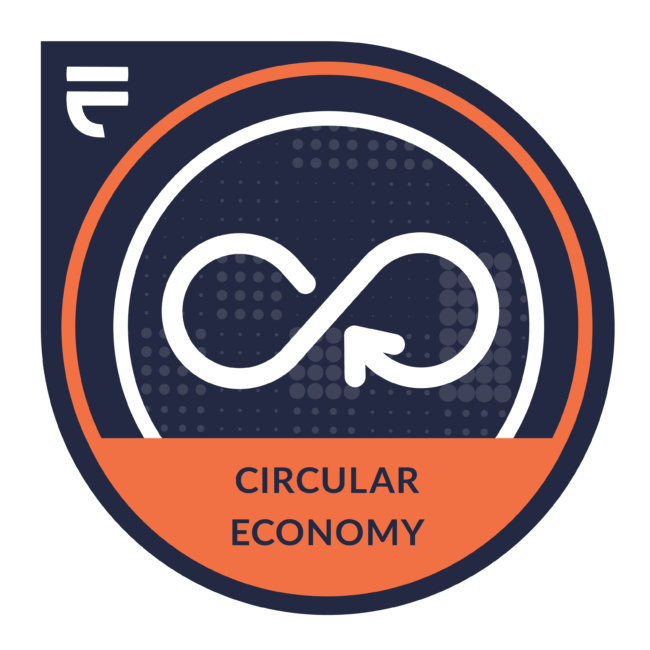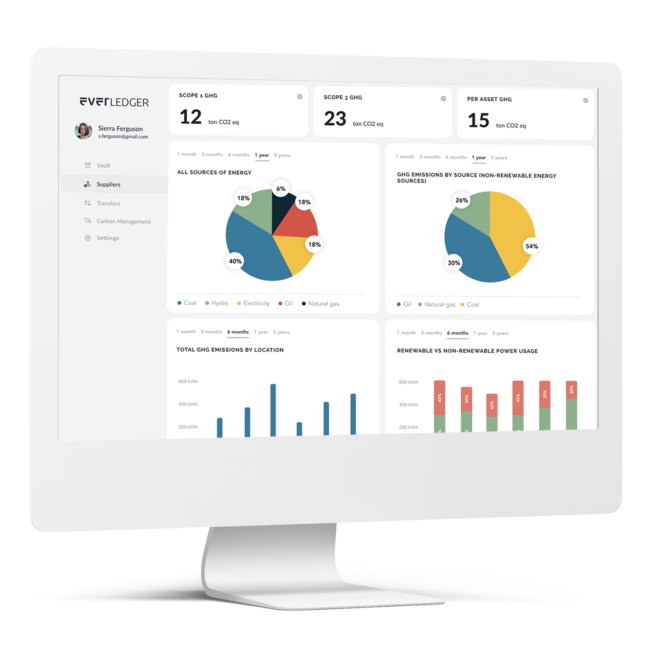EUROPEAN COMMISSION'S REGULATIONS
European Compliant
EV Battery Passport
The Everledger Platform enables full traceability for lithium-ion batteries through their life cycle and across the supply chain; supporting responsible recycling and efficient re-use of EVBs.
What is the Battery Passport?
The Battery Passport is a technology platform that enables all stakeholders in the supply and value chains to share information about a battery and its history to maximize safety, optimize battery use throughout lifecycles and ensure responsible recycling at end of life.
Battery minerals, battery packs and key components (modules, cells) are IoT enabled so data can be shared between qualified stakeholders on a distributed ledger or blockchain. All stakeholders have access to this permissioned data in real time, and the data is immutable.

How does the Battery Passport support compliance?
The European Commission and the Global Battery Alliance have recognized the Battery Passport as the best tool to support the 3 pillars of an electric vehicle battery circular economy.
The proposed EU Battery Regulation calls for “Mandatory supply chain due diligence addressing the social and environmental risks related to extracting, processing and trading raw materials for battery manufacturing purposes”.
Documented, verified, responsible sourcing of critical battery minerals from the mine is key for understanding the source of minerals and the practices around mining operations. This is the first step to preventing child labor and supporting human rights.
Provenance of Battery Minerals from the Mine
Leverage Everledger’s existing emerging technology applications to efficiently read, track and report on these data types and sources. and types to our data users. This type of approach allows for increasing improvements in data and enables more and more data providers to become comfortable with measuring and reporting.
Traditional methods of accomplishing documented, verified, and responsible sourcing of critical battery minerals from the mine involve manual efforts of gathering data, measuring and calculating impacts and in-depth audits where thousands of individual documents must be gathered and analyzed.
Everledger utilizes multiple data types sourced from the Everledger permissioned from our ecosystem, as well as public and private databases to prove critical minerals provenance for Electric Vehicle Batteries.


EV Battery Lifecycle Management
Optimum battery lifecycle management, life extension and assurance of responsible recycling are all given prominent attention in the EU Battery Regulation. Measures include a new reporting system to document battery collection and recycling rates and requirements that batteries are designed to meet recycling efficiencies and specific recovery rates for key battery minerals. Manufacturers will also have to declare levels of recycled content in batteries.
Supported by blockchain technology, the Battery Passport collects, validates and shares this information with permissioned stakeholders, reducing compliance costs and making it easier for EV manufacturers and consumers to quickly make responsible purchasing decisions.
Greenhouse Gas Accounting
“Mandatory carbon footprint declaration” is another provision of the EU Battery Regulation, along with establishing carbon footprint performance classes and maximum carbon thresholds as a condition for placement on the market. Transparency of carbon footprint from manufacturing will also be required.
Looking in-depth into the Greenhouse Gas (GHG) reporting requirements from various regulations and considering the general industry-wide progress on GHG reporting, the EU Taxonomy and the EC Battery Directive will be challenging for companies to adapt to in a short period of time without using adequate technologies to help substantiate sustainability claims – like those enabled by the Everledger Passport.

The Everledger Platform supports
the European Commission's
Battery Directive
The Everledger Platform can provide support for the following EC Regulations:
- Measure #2 – Second-life of industrial batteries
- Measure #4 – Collection rate for automotive and industrial batteries
- Measure #5 – Recycling efficiencies and recovery of materials
- Measure #6 – Carbon footprint for industrial and EV batteries
- Measure #9 – Recycled content in industrial, EV and automotive batteries
- Measure #10 – Extended producer responsibility
- Measure #12 – Provision of information
- Measure #13 – Supply-chain due diligence for raw materials in industrial and EV batteries
Repair, Repurpose, Refurbish, & Remanufacture
How can the Everledger Platform help?
More battery information = More opportunity for re-use or repurposing.
More repurposing = Maximizing resources and reduced costs.
#2 - Second-life of Industrial Batteries
EC Regulation Measure
“Mandatory declaration of levels of recycled content in 2025, and Mandatory levels of recycled content in 2030 and 2035”
End of Life Management
How can the Everledger Platform help?
Everledger Platform (EP) traceability captures and report collection activities including volumes, weights, minerals content and more.
#4 - Collection rate for automotive and industrial batteries
EC Regulation Measure
Recycling
How can the Everledger Platform help?
Leveraging Mass Balance algorithms, the Everledger Platform (EP) can certify materials recovered from a recycling process to verify entry of recycled materials back into the battery production chain.
#5 - Recycled Materials Recovery
EC Regulation Measure
“Lithium-ion batteries and Co, Ni, Li, Cu: Recycling efficiency lithium-ion batteries: 70% by 2030. Material recovery rates for Co, Ni, Li, Cu: resp. 95%, 95%, 70% and 95% in 2030”
Carbon Accounting
How can the Everledger Platform help?
EP can calculate and validate the GHG footprint from mine to recycling, leveraging data and evidence stakeholders post on the blockchain. Offset tool will also be integrated.
#6 - Carbon footprint for industrial and EV batteries
EC Regulation Measure
“Mandatory Carbon Footprint declaration, including carbon footprint performance classes and maximum carbon thresholds for batteries as a condition for placement on the market.”
Automotive & Battery Manufacturers
How can the Everledger Platform help?
EP can validate object-level claims of the material inputs for large format batteries.
#9 - Recycled content in industrial, EV and automotive batteries
EC Regulation Measure
“Mandatory declaration of levels of recycled content in 2025, and Mandatory levels of recycled content in 2030 and 2035”
Lifecycle Management
How can the Everledger Platform help?
EP reduces producer responsibility costs by enabling transparent traceability and validating compliance data.
#10 - Extended Producer Responsibility
EC Regulation Measure
“Clear specification for extended producer responsibility obligations for industrial batteries. Minimum standards for PROs.”
Everledger Battery Passport
How can the Everledger Platform help?
Blockchain enables all participants in the value chain to access and securely share critical battery management data on a permissioned basis.

#12 - Provision of Information
EC Regulation Measure
Critical Minerals Extraction & Processing
How can the Everledger Platform help?
The next Battery Passport platform release will identify, validate and track provenance of battery minerals from the mine.

